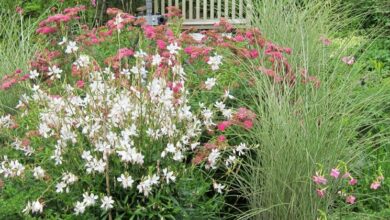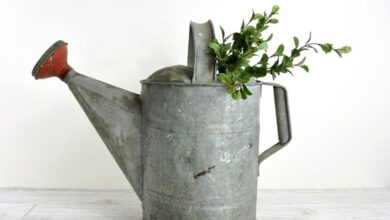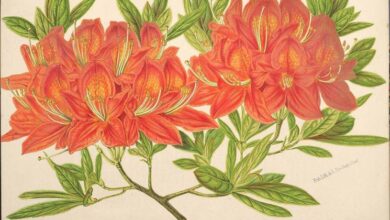Giant Baby’s Tears (Pilea depressa)

Surely the Pilea depressa will be a plant that you will like very much and you will want to have in your home or garden. Do you often have a special taste and inexplicable fascination for plants that are low-growing and related to succulents?
Today we will be talking to you and giving you some interesting facts about this species, which is just one of the many variations that exist throughout the world. Although this in particular tends to be seen more frequently in Latin American countries than in another part of the world.
General information about the Pilea depressa

But even so, you don’t have to worry about the origin of this plant, as it has the ability to adapt to multiple environments. Just stay until the end to find out much of the information you have to know and thus give this plant a long and prosperous life if you want to have one for yourself.
As mentioned in the first paragraph, Pilea depressa is a low-growing plant, which is an ornamental species and has climbing characteristics. This one in particular is native to Brazil and Mexico. But, as with the vast majority of ornamental plants, it is currently cultivated and distributed throughout the world.
It has the ability to adapt to outdoor environments, as well as the interiors of a house or apartment. The most common is that it is kept in hanging pots, since the shape of this species is more attractive when it is kept in a high place and hanging.
It should be noted that it belongs to the Urticaceae family, is of the genus Pilea and has various names that have been given according to the culture and the place where they are found. Among some of the names by which it is known, we can have:
- Little tears
- Baby tears
- The bright and creeping Charlie
- The giant baby’s tears
An interesting fact is that you are starting in this world and you want to place some in your garden, you should know that this species covers around 35 or 700 different species, such as the Pilea cadierei or the Chinese money plant. The vast majority of them have the ability to generate showy flowers. In addition, they are extremely inexpensive species if you do not know how to grow them and decide to buy them.
characteristics

Growth place
In the previous section it was commented that the plant is native to Brazil and Mexico, but currently it is, like other species of the same family, are being widely cultivated in countries such as Australia and New Zealand.
If you wonder why this happens, it must be said that the Pilea depressa needs and prefers tropical or subtropical climates and areas. But as such, it is cultivated throughout the same, mainly those countries or areas that are closer to the Caribbean.
Foliage and stem
Regarding the foliage and stem of the plant, it should be noted that it has a very bright green foliage, although its leaves are quite small. But this is not a problem, since the number of leaves that the plant generates is quite large.
The stem, unlike other species, grows upwards, in this case it grows downwards. It is for this reason that people are recommended to put the plant in a pot and hang it, in order to appreciate the true beauty of the species.
But even though the stem grows downward, it has the characteristics of a climbing plant. So if you do it well, you can have the plant distributed as you prefer and according to the structure that you have provided.
Leaves
It is a fact that anyone wants to have a plant that most of the year maintains its green color and that it does not lose its brightness. Luckily, the Pilea depressa has these characteristics and will always maintain its green, bright and very beautiful foliage throughout the year.
Height
Pilea Depressa plants are very low growing. The maximum they can grow is only 10 cm long. In the same way, it has the capacity to extend in a diameter of 5 cm. Although if it is given the necessary care, the plant can grow up to one meter high and can expand up to 40 cm wide.
Temperature tolerance
Thanks to the fact that it is a plant that grows very well in tropical and subtropical environments and areas, you can have it in a place with a warm environment. On the other hand, if the environment in which you have it has too many fluctuations or there are constant changes in temperature, this can be a negative factor that will affect the growth of the plant.
So keeping the plant indoors turns out to be the best option in these and other similar cases. In addition, it is more practical to have it within reach and sight in order to give it the maintenance and care it needs.
Tolerance to humidity
Plants are very fond of humidity and appreciate the extra efforts in terms of humidity in their environment. You can spray the plant from time to time or put it in a pebble tray filled with water. Installing an indoor humidifier can also be a good idea if you are very dedicated.
flowers
Luckily, this is one of the many species that has the ability to generate flowers. These are very small to be seen from afar and their color is white, which have a star shape. It should be noted that flowering occurs in late spring. But do not get carried away by the flowers since they are not a big thing, what stands out the most are their leaves.
Care

Water
Although it has the characteristics of succulents, in addition to growing in tropical environments, it needs medium watering. That is, instead of watering them only once a week, you will have to do it 3 times a week during the summer and only once a week during winter times.
To guide you and know when to water, follow the rule of keeping the humidity of the top layer of soil of the plant at 50%. Of course, during the fall you will have to wait for the soil to dry completely to do the watering.
Light
Since it is a plant that you can have both outdoors and indoors, you should know that if you have it under constant shadow, you have to have it in a place where the shadow or glare is bright.
Of course, it is very important that you keep it away from direct sunlight. Although you can also have it under artificial fluorescent light if you wish. In case you see that its leaves are darkening, the plant is indicating that it is receiving too much sun and needs you to put it in a shady place.




